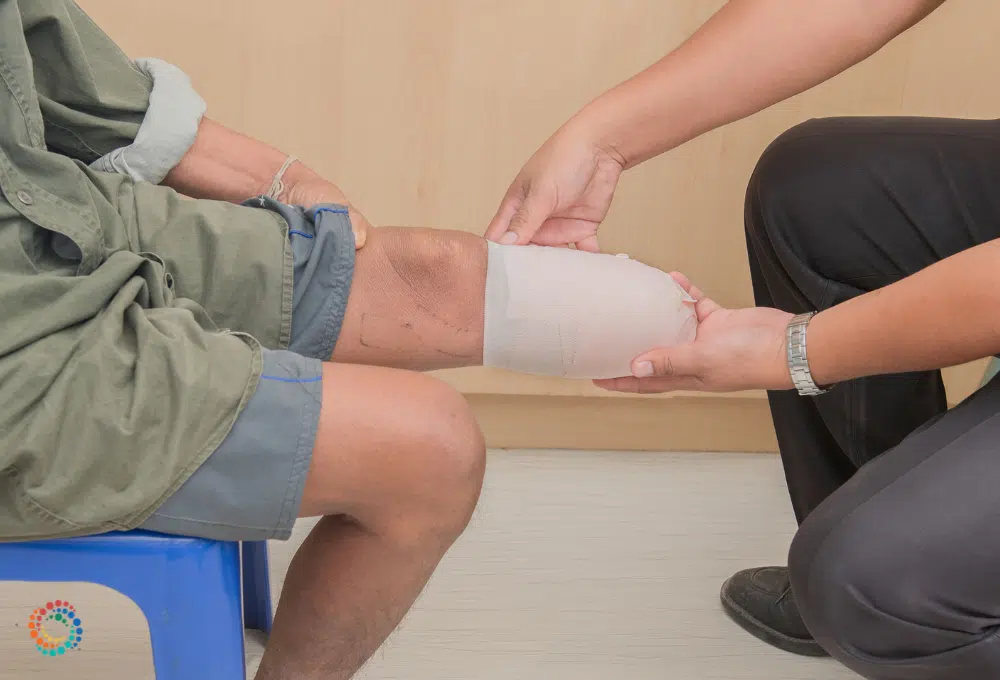Preventing non-traumatic amputations with lifestyle medicine
Addressing the rising rates of non-traumatic amputation requires a comprehensive approach that addresses both lifestyle factors and social drivers of health.
By Elizabeth Beale, MD, MRCP, DipABLM
March 18, 2024

The number of non-traumatic amputations in the United States is increasing, affecting approximately 150,000 patients each year, and is largely caused by diabetic foot ulcers and peripheral arterial disease. Amputation leads to significant disability, financial challenges, and the risk of further amputation. Managing diabetic foot ulcers and peripheral arterial disease with tertiary care is expensive and requires advanced skills and equipment. Disturbingly, without proper peripheral arterial disease management, there is a 29% risk of mortality within five years, and a 57% risk of amputation. This issue calls for a deeper understanding of the underlying factors leading to amputation and potential interventions.
Social drivers of health and lifestyle factors
Recent reports highlight that minorities in the U.S. experience the highest rates of non-traumatic amputation, pointing to the impact of lifestyle factors and social drivers of health. A recent study by Kassavin et al reported that counties with high amputation rates were characterized by a high proportion of African American residents, elevated smoking rates, poverty, mental health issues, and low levels of physical activity, health literacy, and medical insurance. These findings stress the urgent need to address social drivers of health and lifestyle factors to curb escalating amputation rates, especially in vulnerable populations.
Comprehensive interventions for high-risk individuals and communities
The relationship between high-risk individuals’ behavior and high-risk communities requires comprehensive interventions. Recognizing that both lifestyle behaviors and local community characteristics contribute to the problem, targeted efforts to address both in densely populated counties could be crucial in mitigating amputation rates. Conversely, failing to implement preventive measures for high-risk individuals may result in a further increase in amputation rates.

Individual clinical lifestyle interventions
Addressing key lifestyle factors during clinic visits is crucial, with smoking cessation being especially important. Smokers with diabetic foot ulcer are 1.5-2. times more likely to undergo amputation, emphasizing the urgency of addressing this modifiable risk factor. Encouraging regular consumption of minimally processed, predominantly plant-based foods can contribute to improved overall nutrition and ultimately prevent non-traumatic amputations. Additionally, promoting physical activity is crucial, as regular physical activity ameliorates peripheral arterial disease. Furthermore, addressing mental health during clinic visits may have a significant long-term impact on reducing amputation rates by targeting the pathways linking depression and stress to poor glycemic control, peripheral arterial disease, and amputation.
Supporting at-risk individuals in their communities to make changes that reduce their amputation risk is essential. Recognizing the role of stress in peripheral arterial disease and glycemic control, efforts should focus on reducing poverty levels and enhancing employment and healthcare services that meet patients where they are. Despite the Affordable Care Act (ACA), barriers to care persist for disadvantaged populations, including long waiting times, inconvenient office hours, transportation difficulties, and copayments. These barriers disproportionately affect African American and Hispanic individuals. Addressing these challenges is necessary to ensure individuals receive timely and accessible healthcare, helping to prevent amputations, and improve overall health outcomes.
Increased physical activity requires communities to provide suitable environments for exercise, such as parks, sidewalks, and bike lanes, while making these usable by ensuring public safety. The adoption of a healthful diet necessitates the ready availability of affordable and satisfying unprocessed and minimally processed foods.
Conclusion
Addressing the rising rates of non-traumatic amputation requires a comprehensive approach that addresses both lifestyle factors and social determinants of health. The American College of Lifestyle Medicine (ACLM) is a leader in information and resources regarding type 2 diabetes, its staggering economic costs, genetic predisposition, racial disparities, and dire complications, including amputations. ACLM’s Type 2 Diabetes Remission Certificate course, launched in 2023, is a valuable opportunity to develop deeper knowledge, competence, and confidence in treating type 2 diabetes with a goal of remission. More than 1,000 physicians and other health professionals have enrolled in the course since it launched in 2020. Targeted interventions in high-risk populations and communities, coupled with efforts to reduce barriers to care, can play a pivotal role in stemming the tide of amputations and improving the overall health and well-being of individuals at risk.